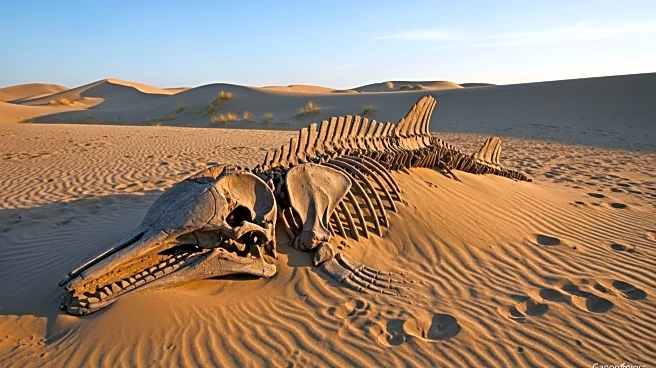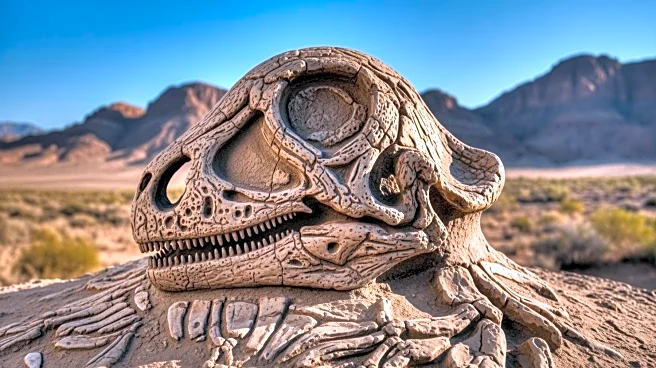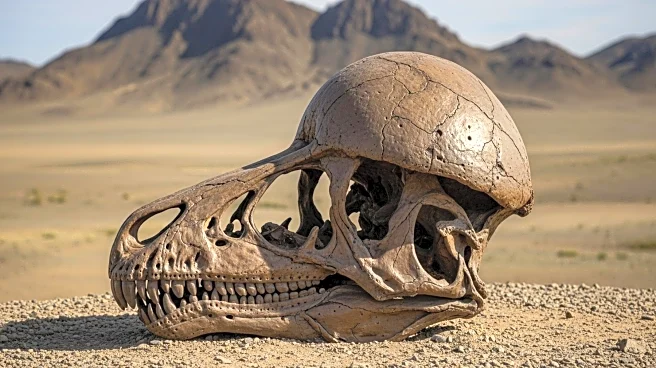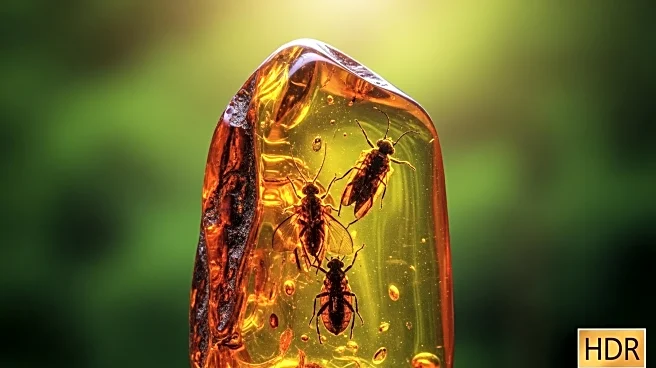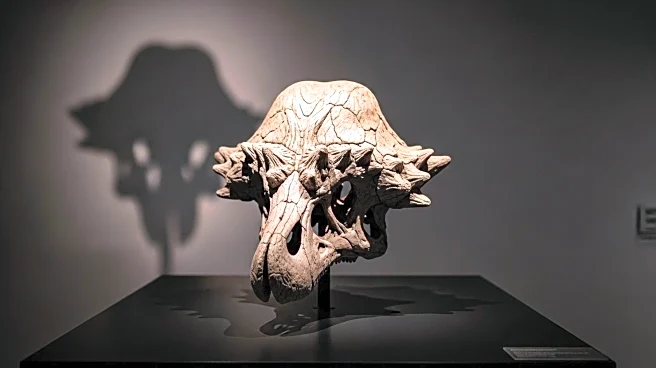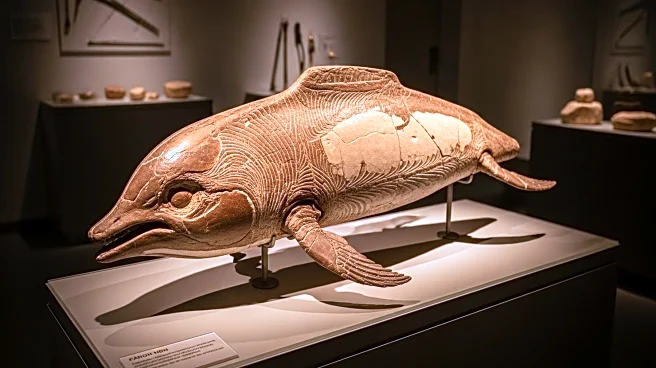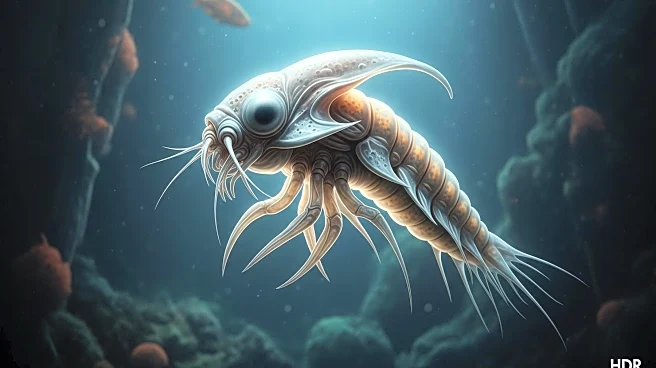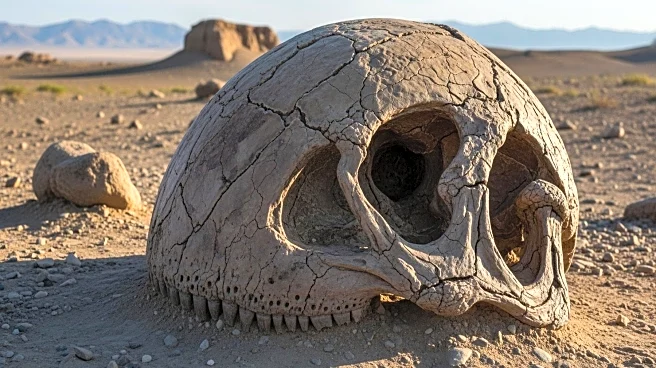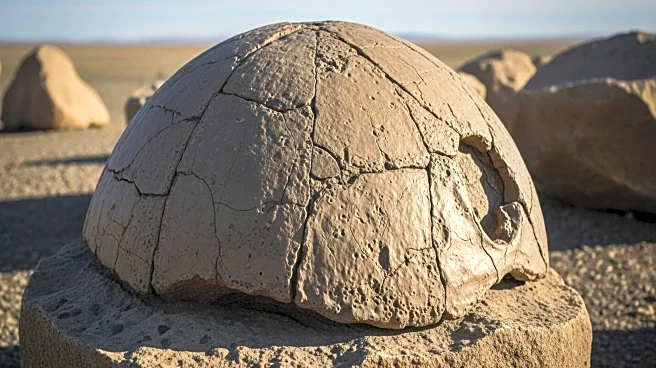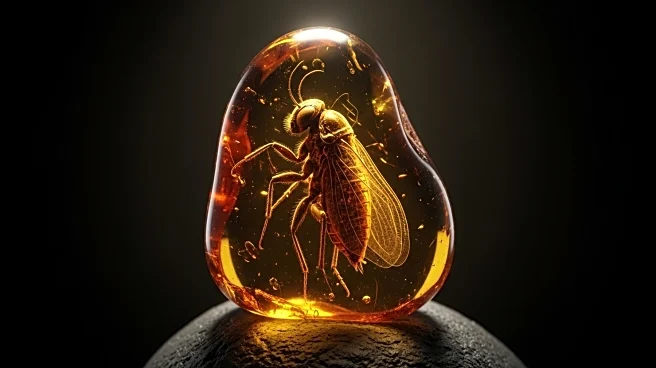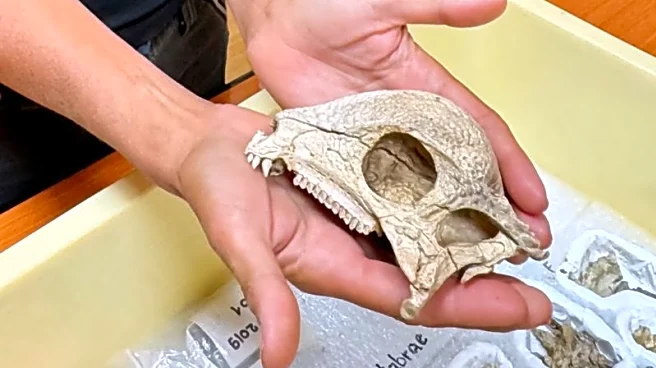What is the story about?
What's Happening?
A team of scientists has uncovered a 3.5-meter dolphin fossil in the Ocucaje Desert of Peru, an area that was once an ancient ocean. The fossil, discovered in July, is set to undergo thorough analysis before being displayed to the public. This discovery adds to the collection of whale fossils found in the region, providing further insight into the marine life that existed millions of years ago. The Ocucaje Desert is known for its rich paleontological history, offering a glimpse into the prehistoric era when the area was submerged under ocean waters.
Why It's Important?
The discovery of the dolphin fossil in Peru is significant for paleontologists and researchers studying ancient marine ecosystems. It provides valuable information about the biodiversity and evolutionary history of marine mammals. Understanding the species that inhabited ancient oceans can help scientists reconstruct past climates and environmental conditions, offering insights into how marine life has adapted over time. This fossil could also contribute to the broader knowledge of cetacean evolution, shedding light on the lineage and adaptations of dolphins and their relatives.
What's Next?
The fossil will undergo exhaustive analysis to determine its age, species, and ecological role within its environment. Researchers will likely conduct comparative studies with other cetacean fossils to understand evolutionary patterns. Once the analysis is complete, the fossil will be prepared for public display, potentially attracting interest from both scientific communities and the general public. This discovery may prompt further exploration in the Ocucaje Desert, as scientists seek to uncover more fossils that could provide additional insights into ancient marine life.
Beyond the Headlines
The discovery highlights the importance of preserving fossil sites and supporting paleontological research. Ethical considerations regarding fossil excavation and display are crucial, as they ensure that such findings are used responsibly to advance scientific knowledge. Additionally, the cultural and educational impact of displaying such fossils can foster public interest in science and history, encouraging future generations to engage with paleontology and environmental conservation.
AI Generated Content
Do you find this article useful?
